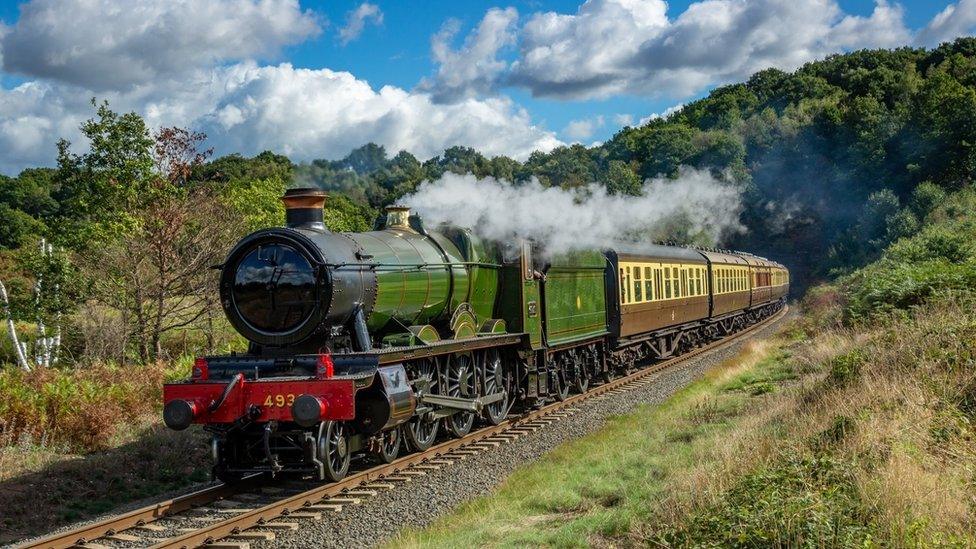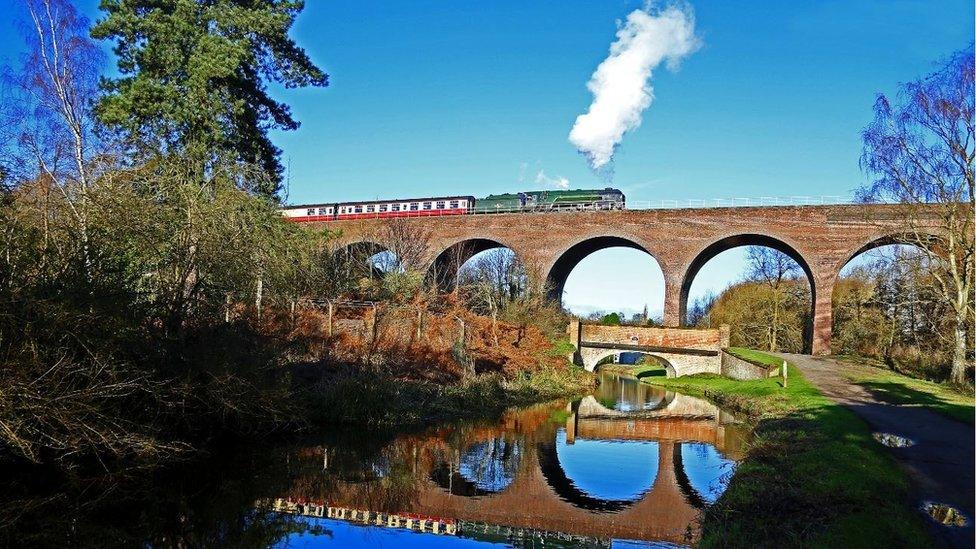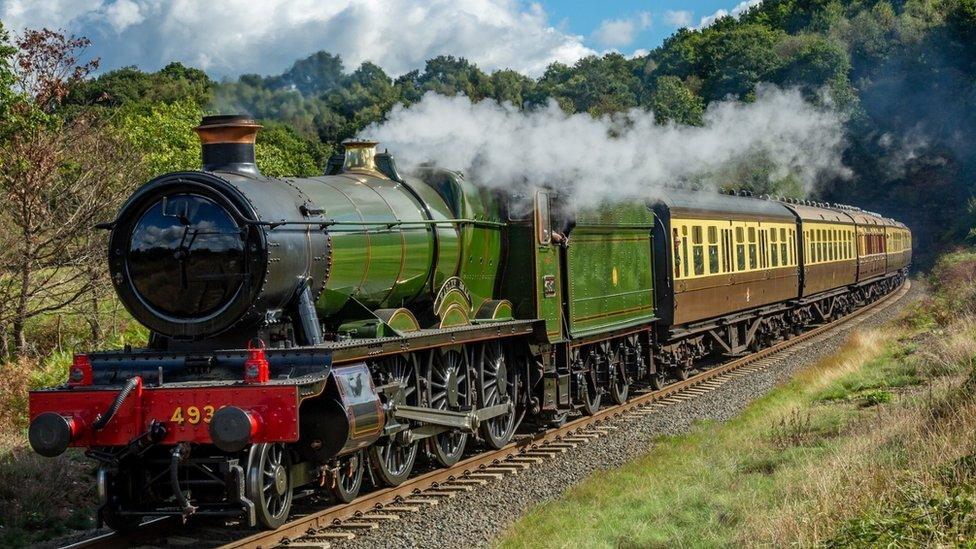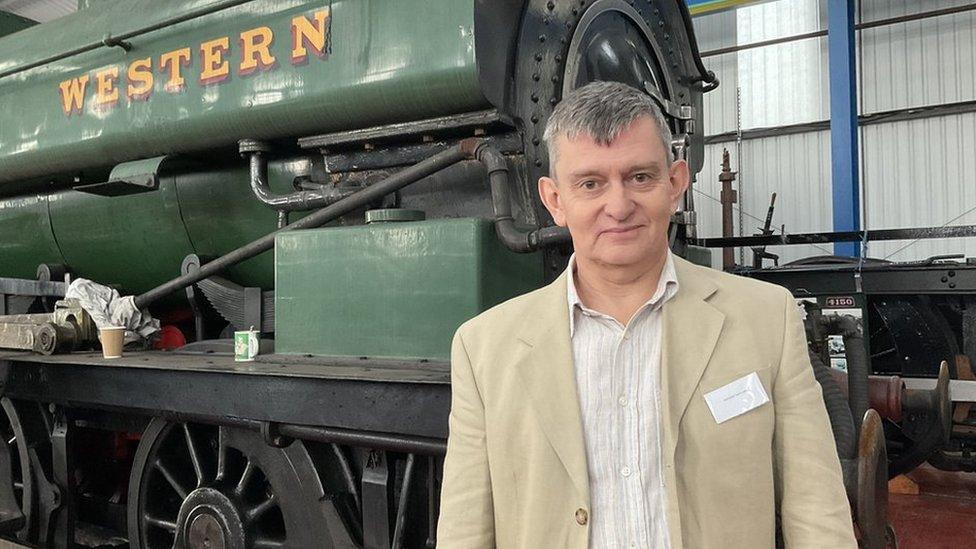Heritage railway eyes redundancies as costs rise

Locomotives were brought back to run on the Shropshire-Worcestershire heritage line in the the 1960s
- Published
Severn Valley Railway (SVR) is to make up to 18 people redundant as it tackles rising costs.
The heritage attraction needs to save almost £1m on staffing to manage a drop in passenger numbers and increased fuel prices.
Unfilled vacancies and redeployments achieved a £650,000 saving last year, bosses said, with a further £300,000 reduction necessary in 2023.
"We are about to begin a consultation period for compulsory redundancies," said managing director Helen Smith.
Ms Smith, who leaves her post at the end of the month, added the visitor attraction also had to allow for "a significant statutory increase to minimum wage levels".
SVR, which operates regular passenger trains on a 16-mile (25.7km) route between Kidderminster and Bridgnorth, is largely volunteer-run, supported by employed staff.
The railway has previously said it continued to be affected by a post-Covid drop in visitor numbers, made worse by the cost-of-living crisis.

Staff are employed at SVR across various roles, including engineering, finance, HR and health and safety
The line is set to reopen with a reduced timetable in March, with services between Highley and Kidderminster only running on weekends, Ms Smith said.
She told its monthly newsletter Branch Lines the temporarily reduced service was one of several cost-cutting measures.
"Others include an ambitious reduction of utility costs, only carrying out essential work on rolling stock and infrastructure and a large-scale reduction in salary costs," she said.
Incoming interim managing director Gus Dunster said SVR's charitable trust would make "significant contributions" over the forthcoming year, with SVR Company Ltd also donating £40,000 to utility costs.
"To set this generous amount in context, it only accounts for 16% of what we need to save,” he added.
Related topics
- Published12 January 2023

- Published7 September 2022

- Published13 September 2022
